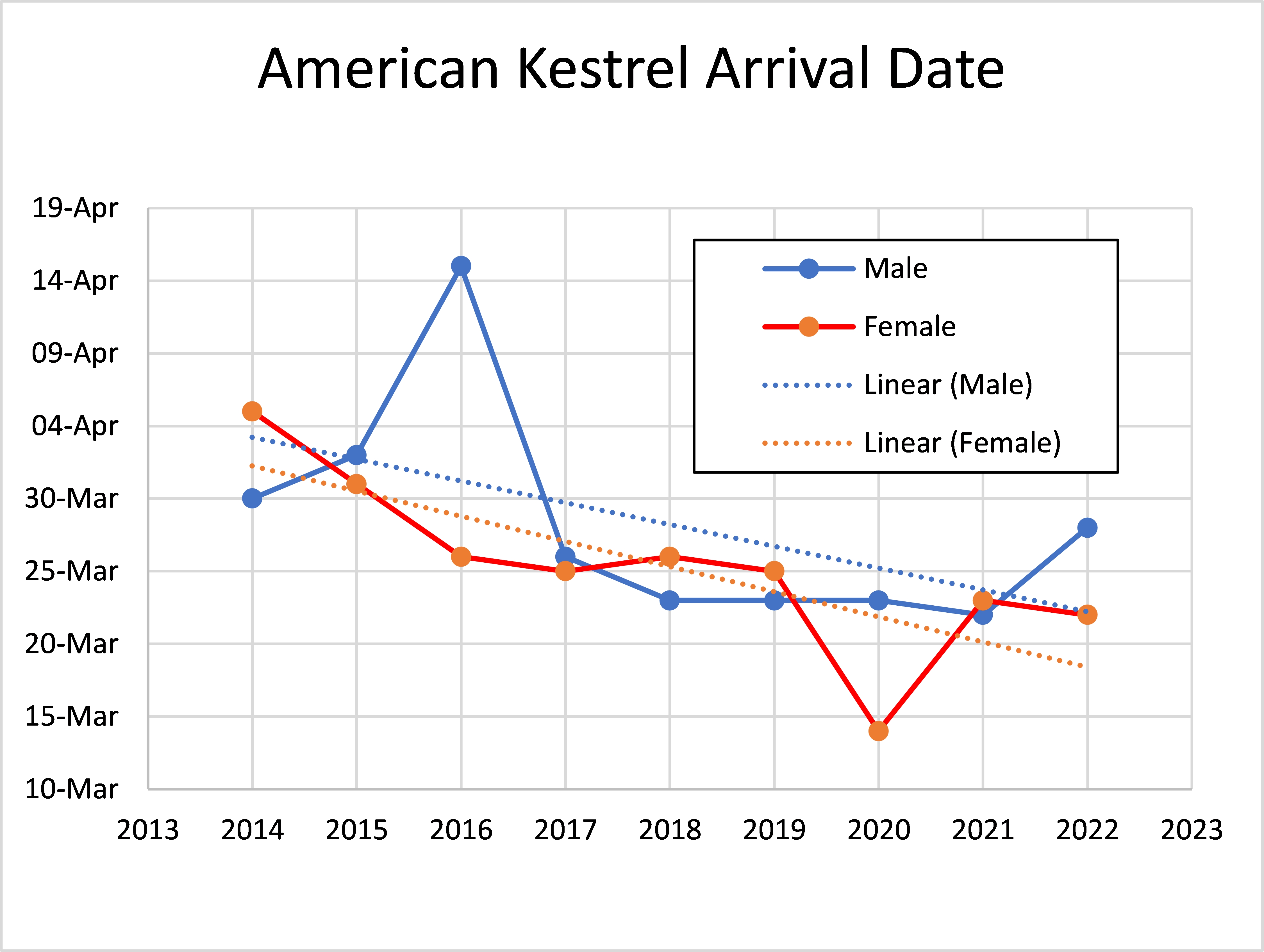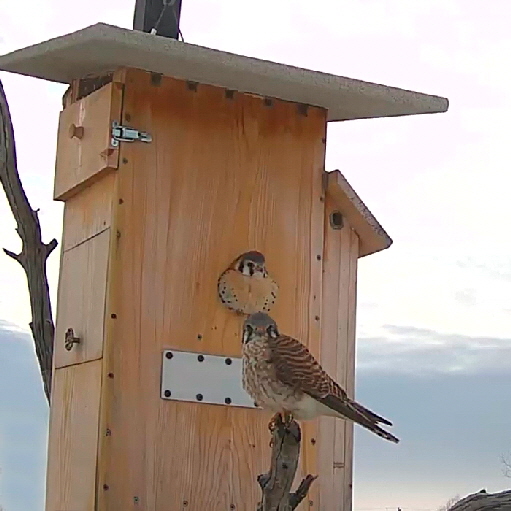2014: March 30 male, April 5 female (6 days)
2015: March 31 female, April 2 male (2 days)
2016: March 26 female, April 15 male (20 days)
2017: March 25 female, March 26 male (1 day)
2018: March 23 male, March 26 female (3 days)
2019: March 23 male, March 25 female (2 days)
2020: March 14 female, March 23 male (9 days)
2021: March 22 male, March 23 female (1 day)
2022: March 22 female, March 28 male (6 days)
2023: March female, March male ( days)
Based on nine years of detailed observations we've seen variations of 1 to 20 days between the gender first sightings. When the male arrived first there have been 1 to 6 days between the male and female sighting, for an average of 3 days. When the female arrived first there have been 1 to 20 days between the female and male first sighting, for an average of 8 days. Since there was only one year with 20 days of separation, we can hypothesis that this number of days is an anomaly. However, further years of data collection will be needed to test this assumption.
The below studies are Nu-Sun Cinema's interpretation of American Kestrel behavior.


Thanks to Dr. James Duncan from Discover Owls for constructing this graph from our research. Click here to to view Discover Owls web site.
